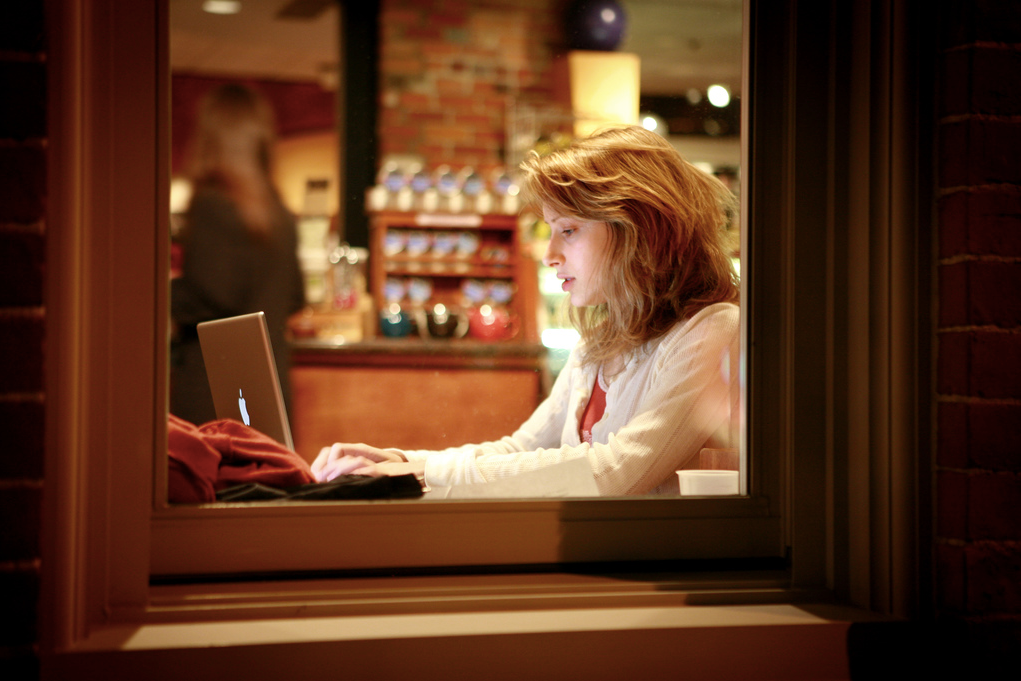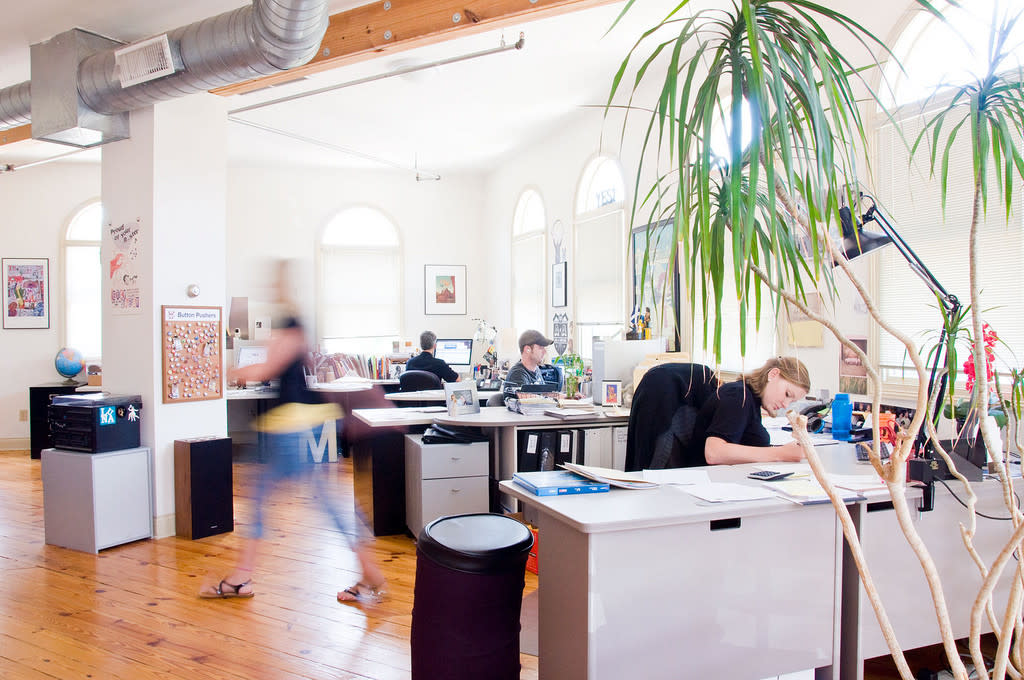There's no shortage of productivity articles to read or techniques to try, but I've realized lately that optimal productivity comes in different states for everyone. Not only are some of us morning larks and others night owls, some of us need to move around a lot, others find a standing desk works best, and some of us work to music while others need silence.
The most important thing I've recently come to understand about productivity is that embracing what works for me (once I know what that is) is the best way to get more done. If you're struggling to improve your own workflows, here are three areas to start experimenting with.
Time of Day

As more of us are working remotely, joining co-working spaces or working from home these days, we have more flexibility to work at the times when we're most productive. We can finally pay attention to what helps us do more, better work.
To start with, we all have a built-in body clock called a circadian rhythm that runs a little differently to everyone else's. This is what determines whether we're night owls or morning larks. Depending on how your internal body clock runs, you could be more suited to a particular part of the day. Generally speaking, we all start out being most suited to early mornings, and our body clocks slip later during adolescence, when we prefer to sleep in and stay up late. As we become adults, some of us hang on to these night owl tendencies, others become extreme morning larks, and most of us slide into a comfortable middle ground.
You probably already know what times of day suit you best, but if not, it's worth exploring since being tired will hurt your performance. I had always liked being up early but I wasn't sure my body was naturally inclined that way until I tested starting my day later (which definitely isn't for me).
Although we all have different circadian rhythms, most of us have a natural dip in energy in the afternoon. So if you notice yourself moving slowly or feeling unmotivated after lunch, take heart in the fact that it's not just you.
Once you have a good idea of how your internal body clock works and how your energy naturally rises and falls throughout the day, you can use this information to plan a more productive workday. For instance, if you find working late at night suits you, plan your biggest tasks or your most intense projects for that period. If mornings work for you, you may need to get up earlier for some interruption-free focus time.
I often need a nap in the afternoon, so I've found that planning to work on major tasks before lunch and working from home where I can duck off for a half hour nap suits me best.
Surroundings

Adjusting your surroundings to make you more productive is easy to underestimate, but can actually make a huge difference. For example, if your workspace is too cold, you're actually going to be wasting energy trying to keep warm. Of course being too warm is no good for your productivity either. You really need to find your "sweet spot" as far as temperature goes, and try to get your workplace as close to that as possible. The team at Zapier has this figured out; everyone knows just what temperature they work best at, and takes control of keeping their workspace from getting too hot or cold.
If you're sharing a workspace you might need to bring in a portable fan or heater, or move your desk to be closer to the heating and cooling system (or further away).
Noise levels (and types) are another environmental factor that can affect productivity and are very personal. I always thought it was strange to like having TV reruns on in the background while I work until I learned entrepreneur Nate Kontny does this, too.
"I know this isn’t real common, but I’ve always been pretty good about working while watching television. It can’t be some really cerebral show that I’ve never seen before, but things like re-runs of Felicity or West Wing are perfect. The core of Draft was built while watching the entire season of West Wing over again at 1AM."
Aside from TV, others like working with music on, though some need complete silence to concentrate. The type of work you're doing can change what sounds make you most productive, too. One study published by the Journal of Consumer Research found that creative work is easier amongst ambient noise, which encourages us to think outside the box. If that's you, check out an app called Coffivity, which offers soundtracks such as "Morning Murmur" and "Lunchtime Lounge". Silence is more suited to work that requires deep focus rather than creative thinking. And if you like working to music, your own preferences will obviously play a part in what you choose to listen to.
Lastly, pay attention to how much light your workspace has, and how it affects your productivity. I tend to need more natural light when I'm working than others, so I look for spaces to work near windows (it's also good for the environment). On the other hand, a study published by the Journal of Consumer Research found that our creative thinking is enhanced by dim lighting, which helps us to feel less inhibited. So test out your own preferences if you're not sure about them, but keep in mind the type of work you're doing when you adjust your workspace, as well.
Managing Your Workload

Once your workspace is set up and you've worked out the time of day when you're most productive, you can start experimenting with how you approach work itself. Here are a few suggestions, but you'll definitely want to experiment to see what works for you.
Chunk Your Tasks
If you have different types of work to get through, grouping similar tasks together into time "chunks" can make you more productive than switching between different types of work all day. For instance, small, simple tasks can be saved for the periods of your day when you're low in energy, or in-between meetings when you don't have time to get stuck into bigger projects.
A similar method is to front-load your day (or your week). This means you work on the big, intense projects first, and work on smaller tasks that don't have deadlines as you go through the day. Knocking off your most important tasks first make it surprisingly more fun to finish other work in the afternoon, since the stress of today's deadlines is already dealt with.
Just Get Started
Something I often struggle with is just getting started on a big task or project, so I take this into account when planning out my day. Breaking down a task into smaller sub-tasks or action steps can be helpful in getting over the hurdle of just starting.
Another way I've overcome this in the past is to just commit to working on something for just five minutes—not long enough for it to be a huge effort, but just long enough for me to feel like I might as well keep going, once the five minutes is up.
Set Yourself a Challenge
When you're working from home or a remote workspace, it can sometimes be hard to keep up with your workload or meet all your deadlines. I've found a good way to manage this is to challenge myself. Sometimes I challenge myself to get all my work done by noon. A short deadline can do wonders for your focus!
If you're a fan of the Pomodoro Technique, you can use that as a challenge, too. Try challenging yourself to get something finished before your Pomodoro timer goes off—you might not get it done, but you'll probably find you focus a lot better when you're working against the clock in a short burst like that. If timers aren't your thing and you work from home, you can try "real life Pomodoros" instead: naturally occurring intervals that you can use as timers for short bursts of work, like waiting for your dishwasher to run through, or waiting for someone to arrive for a meeting.
In my own experience, testing one part of your workday at a time is the best way to know what makes a difference to your productivity (good and bad). Once you've got one thing in place, like what time of day you work best, you can experiment with another part, like how you chunk your tasks together or breaking down big projects to make them more manageable.
This probably all sounds like a lot of effort, but the pay off for knowing what makes you productive is huge. It's definitely a lot more rewarding than trying to use other people's methods and getting frustrated when they don't work.
Learn more about how to set up your desk for productivity and ergonomics in our article on The Best Way to Organize Your Desk.
Credits: Time of day photo courtesy Delgoff. Surroundings photo courtesy Eric Murray. Managing your workload photo courtesy Brad.




